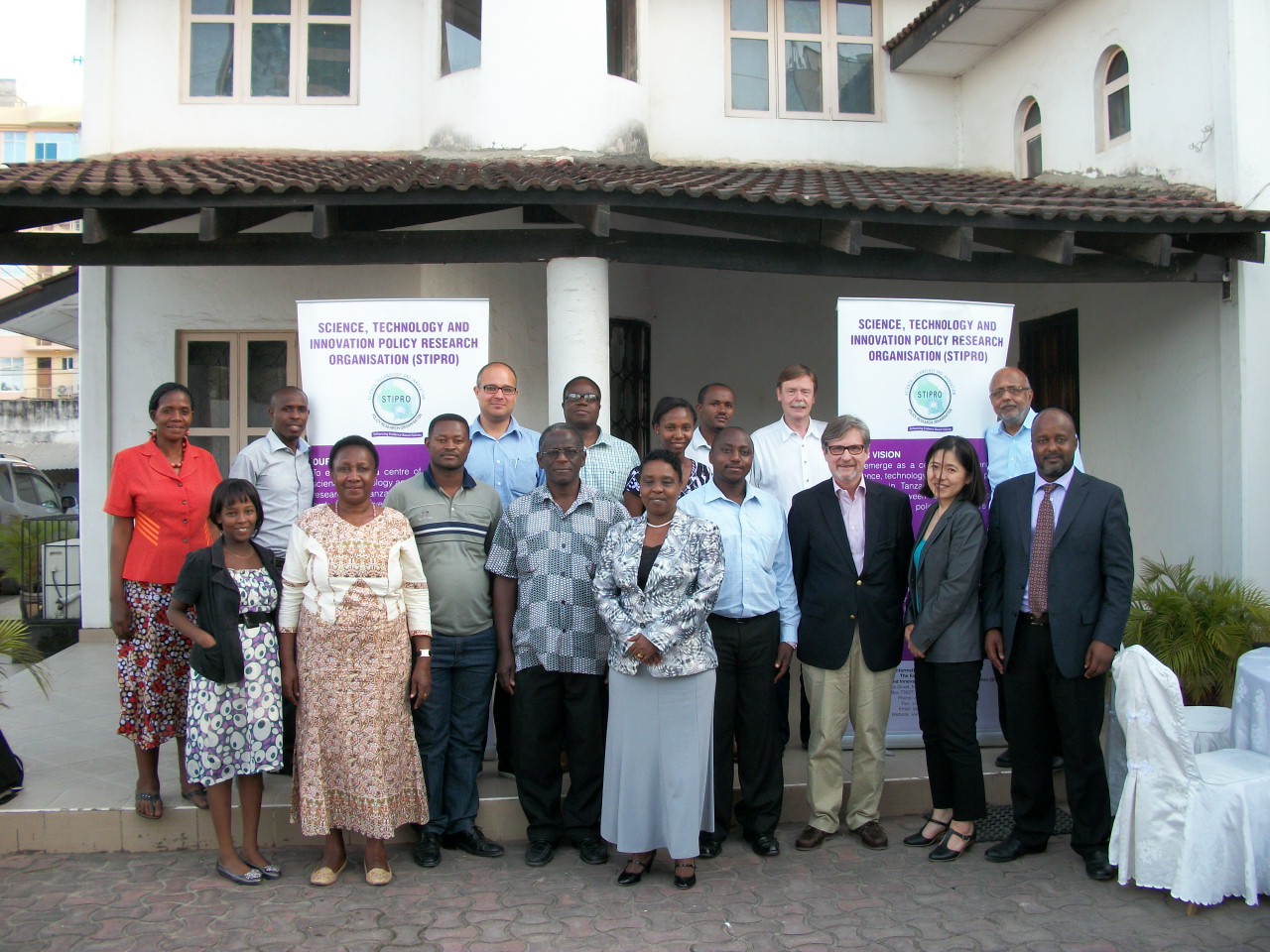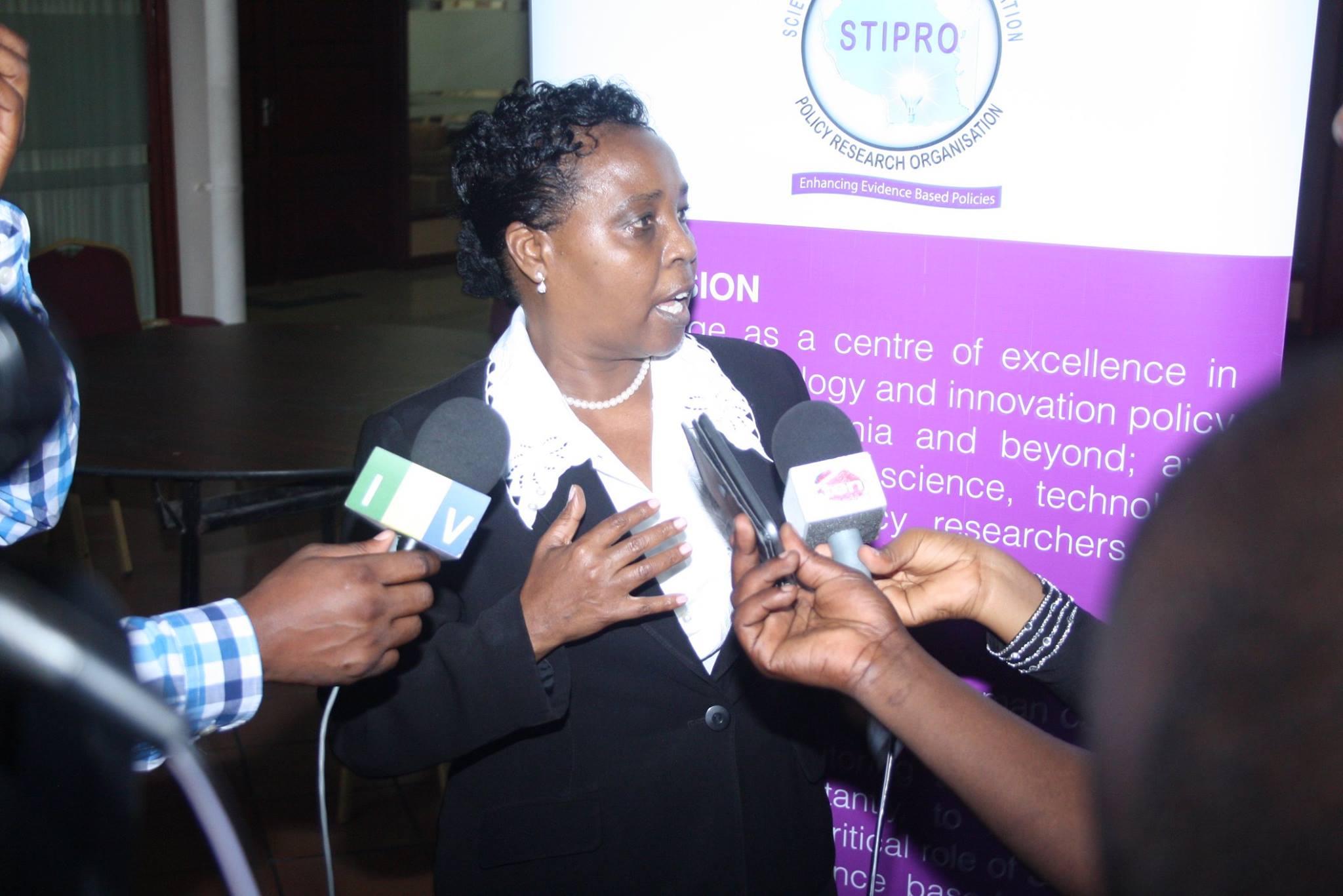On December 16th, I was in Dar es Salaam, Tanzania, and I had the pleasure of visiting STIPRO: Science, Technology & Innovation Policy Research Organization. Before my visit I have been in communication, through email and telephone, with the Executive Director, Dr. Bitrina Diyamett. I introduced myself and my research intentions to her earlier before my arrival to Tanzania, and she was kind enough to respond with positivity regarding staying in touch and considering STIPRO as one local source of information for my research.
I met with Dr. Diyamett, and we spoke mostly about the importance of STI policy research for developing regions, particularly in Tanzania (and generally in Africa). For me, the conversation felt like something I want to continue for hours, because I am only recently starting to meet African scholars who appreciate the interface area between technology and policy. For Dr. Diyamett, this is what she does on regular basis: policy research for STI. She was quick to supply me with interesting information about the developments happening in Africa on that regard, such as AfricaLics: the African Network for Economics of Learning, Innovation & Competence Building Systems. Then, I was taken on a brief tour around STIPRO’s office by Dr. Diyamett, introduced to STIPRO’s staff, and shown some of publications of STIPRO. Among those publications, one particular policy brief caught my attention, and when I later read it in full I was not disappointed. I will briefly return to this.

STIPRO and what it does
STIPRO is mainly in the business of producing knowledge that informs policy. It is therefore one of the institutions worldwide that seek to bridge the gap between the science and technology world, on the one hand, and the policy-making world on the other hand. This sort of work has recently been called ‘knowledge brokering’. As stated in their website, the mission of STIPRO is: “To undertake and improve human capacity in STI policy research, analysis, formulation, monitoring and evaluation. More importantly, to raise public awareness on the critical role of STI policy research for evidence based decisions.”
Institutions like STIPRO act as think tanks, research incubators, policy advisors, program evaluators and public advocates of good practices in the field of policy making in STI for social and economic development. The need for such institutions arises from how the scene looks without them. The scene does not look good without them:
“Although [scientists and technologists] and policy makers may share the same goal, they do not necessarily have the same long-term and short-term imperatives… This may result in sporadic interaction between the two groups but when there is dialogue, there can be misunderstanding, miscommunication, and sometimes conflict. An additional factor that perpetuates the divide between scientists and policy makers is that neither the field of research nor the field of policy making is predictable and stable.” [1]
This scene of misunderstanding, miscommunication and sometimes conflict needs institutions like STIPRO to smoothly facilitate the interaction and collaboration for the benefit of all. STIPRO performs its role mainly through activities such as research projects, organizing workshops, participating in related conventions, promoting and organizing training programs, writing policy briefs and other publications, and advising relevant government entities on STI related policies.
“The Utility Value of Research and Development (R&D): Where does Tanzania Stand?”
A policy brief, with the title above, caught my attention the most, from the list of publications I was given by STIPRO as samples of their work. Published in June 2010, this publication starts by asking a good question (and a good question is always a good start): “While the positive relationship between investment in R&D and social and economic development cannot be denied (most countries that commit a remarkable proportion of their GDP to R&D are the rich ones), the direction of causality is very much questionable. Does investment in R&D bring socio and economic development or richer countries tend to spend more on R&D?“
Essentially, this policy brief gives a good synopsis of the importance of R&D investments to national socio and economic development, but not any R&D. There has to be intentional and strategic prioritizing and allocation of resources, and that has to be informed by the realities of the country in question, not any other foreign reality or a future aspiration. Therefore, it is rather a question of how much R&D investments are enough for certain contexts, and what their priorities should be.

While it is not the intention here to summarize the whole policy brief, I am just going to post two of my favourite excerpts from it. These quotes are in sequence, and they pretty much say a load (emphases by me):
“countries and firms are at different levels in innovativeness, and their requirement for formal R&D in the innovation process is therefore also different. Two major groups of countries can now be identified:
- Those countries where innovations to a large extent depend on imitation and minor technological improvement, where formal R&D is normally not required: Innovation is achieved through tinkering or learning by doing; and where R&D is used, it is to assist in the tinkering; and in most cases has to be close to production, e.g R&D units in companies. Example of Japan is instructive here. Japan for instance started industrialization through import of foreign technology, integrated this into R&D and production departments. The Japanese R&D during this era, termed as catching up period (1945-1972) was largely on adaptive technology
- Those countries that are capable of generating and putting in practice new technologies (products and processes). Here R&D is normally a part. Investment in R&D by both the country and companies therefore a must.”
……
“Technology should therefore be put first rather than science; because without technology science is meaningless as far as socio-economic development is concerned – the abbreviation S&T in this case would have been T&S. The simple reversal of letters in this abbreviation would have made a remarkable impact in the way science, technology and innovation policies are designed and evaluated in least developed countries – at least policy makers would have understood that technology comes first, and the focus of the S&T policies to be more on technology and producers, rather than on science and researchers; and the technology (current and potential) to determine what science, and how much investments to be made.”
…..
All in all, I was happy with my visit to STIPRO, and I look eagerly forward to interact more with its team.
————
[1] Gussai Sheikheldin, Gail Krantzberg and Karl Schaefer (2010). “Science-seeking behaviour of Conservation Authorities in Ontario.” Environmental Management, 45(5): 912-921. pg. 912.
